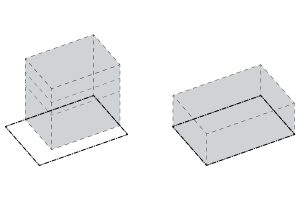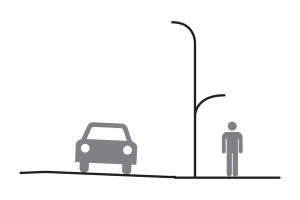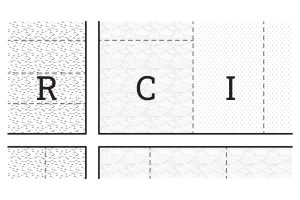Definitions and Notes
Deed Restriction: Anything that reduces (or restricts) the deed. A covenant is a type of deed restriction, because it imposes restrictions/rules on the deed.
Covenant
Covenant: Literally means, ‘a contract’. In real estate, it’s a legal agreement used to protect or uphold a condition or special circumstance of use on a parcel of land.
Covenants would be researched after the initial zoning and building code look.
- Covenants can be more effective than zoning in achieving and maintaining aesthetic harmony and overall quality.
- Legally they are more difficult to alter than zoning.
Restrictive Covenant: Require a buyer to not do something
- Example: May require that a building have a certain minimum floor area, and may specify the style, type of construction, and other such restrictions.
- Example: Mr A has a property, and sells half of the property to Mr. B. — Mr. A has placed a covenant that Mr. B is not allowed to construct a driveway along the property and instead needs to access the garage from the alleyway.
Affirmative Covenant: Are covenants that legally require a buyer to do something
- Example: Maintain a fence and cut their grass when it gets to a certain length.
Conditional Covenant: Clause that imposes a restriction on a buyer and specifies that if the restriction is violated, something will happen.
- Example: Selling a piece of land to a company to build a road by X date, if they do not complete the task, the title to the land will revert to the original grantor or heirs.
Detailed Covenant Examples
Single Property Owner
A seller who owns two adjoining parcels of land, they may place a covenant on the one sold which may benefit the parcel retained and are legally enforceable. This could be to not build a building above a certain size to maintain their sun exposure, or building of a certain style to match theirs.
Large Residential Development Example
A common occurrence is covenants on large scale residential land developments. The purpose could be to set and maintain an aesthetic harmony between buildings and prevent destructive land use. In this example, the ultimate goal is to create a uniform neighborhood and prevent any loss in property value due to buildings standing out or detrimental land adjustments.
- Example: Retail development being required to provide a certain number of ADA parking spaces. In this instance, the covenant is establishing a requirement greater than the minimum code requirement.
- Example: A developer sells a bunch of lots in a development and has restricted all newly built homes to be in a traditional style.
Discriminatory Covenants
Sometimes these covenants may contain discriminatory stipulations (intentional or not) where a race, religion, etc, is excluded. These are illegal according to the US Constitution and cannot be enforced in any capacity.
Covenant Enforcement
Normally a governing body of some kind is appointed to enforce community wide covenants.
HomeOwner’s Association (HOA): A group of people (typically homeowners in the community) that meet to review guidelines and enforce rules. May be created to uphold and enforce covenants of the neighborhood for the mutual benefit of the residents. Such an association may include or frequently meet with an architectural review board, which would have the authorization to approve all proposed designs.
Architectural Review Board
Similar to an HOA, the Architectural Review Board is typically a group of homeowners with careers, or an interest in design.
- They would be able to control and input: color, size, style, design compatibility.
- They would not be able to control cost or use.






Leave a Reply
You must be logged in to post a comment.